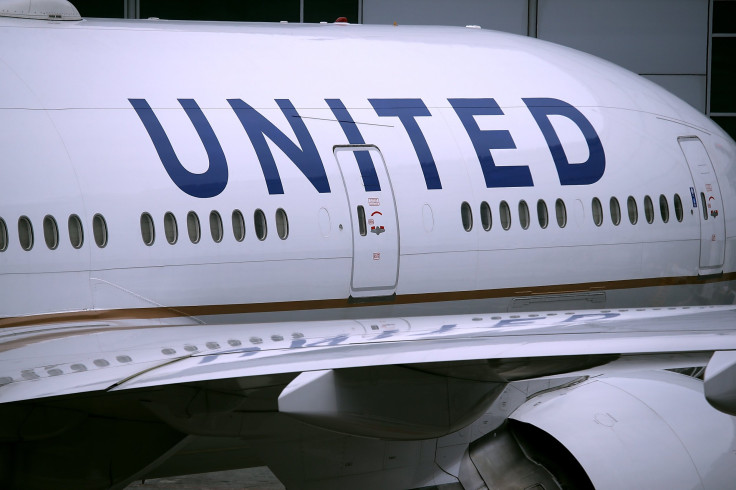United Airlines' Hub Strategy Still Needs Work

Over the past year or so, United Continental (NYSE:UAL) has implemented an abrupt strategy shift. After many years of slow growth, management is executing an aggressive expansion plan with the goal of strengthening United's mid-continent hubs and regaining its "fair share" of connecting traffic relative to American Airlines and Delta Air Lines (NYSE:DAL).
United Airlines' first-quarter results were somewhat encouraging. That said, the carrier's growth rate will only really take off in the second half of 2018. United may also face tougher low-cost carrier competition later this year, while the headwind from high fuel costs is increasing.
The article originally appeared in the Motley Fool.
Meanwhile, United Airlines still lacks a winning strategy in its coastal hubs, which account for the majority of its capacity. Some recently announced changes to United's hub schedules in Newark and Washington, D.C. highlight the carrier's key competitive disadvantage relative to Delta.
Shuffling Flights Around
In early October, United Airlines will implement some significant changes to its schedule at Newark Airport: its No. 1 hub in terms of capacity. It will upgrade its existing Newark-Key West route from seasonal to year-round and add frequencies on 15 other routes. In December, it will launch seasonal nonstop service between Newark and Palm Springs, California.
Each of the 15 routes that are getting additional service will have one extra flight per day. This is designed to provide an improved schedule and extra capacity in popular markets for United's New York-based customers.
However, United Airlines will also cut some flights in Newark this fall. The carrier plans to shift its twice-daily routes to Chattanooga, Tennessee; Ithaca, New York; and Scranton, Pennsylvania to its Washington D.C. hub at Dulles Airport. It will also stop flying from Newark to Baltimore, Maryland; Des Moines, Iowa; Fort Wayne, Indiana; and Hartford, Connecticut. Its Newark-Sacramento route will become seasonal as well.
These flight cuts in Newark offset the new flights almost one-for-one. This reflects the fact that Newark Airport is extremely crowded. While it is no longer under strict FAA slot controls, there is very little room to add flights there.
What's The Strategy?
United Airlines has portrayed these changes as a move to tailor its offerings in Newark to New York-based customers' needs. Indeed, most of the markets being dropped (or having flights moved to Washington, D.C.) primarily carry connecting traffic.
On the other hand, United's stated hub strategy -- at least for its mid-continent hubs -- is to increase the number of available connections. The logic is that customers connecting from small cities pay higher prices than nonstop travelers from large cities due to low competition in those smaller markets.
United claims that it can offer better connections for customers from Chattanooga, Ithaca, and Scranton in Washington D.C. than in Newark. That seems like PR spin: United operates nearly twice as many flights at Newark Airport than at Dulles Airport.
The more likely rationale is simply that United had room to add departures on some of its banks of connecting flights at Dulles, whereas it can't expand its schedule at Newark. The company decided to sacrifice some connectivity to enable more nonstop flights with high demand.
Delta Doesn't Face These Trade-Offs
Some of the trade-offs United Airlines opted for seem questionable. It already had five or more flights per day in several markets where it is adding flights, often using regional jets. Up-gauging to more fuel-efficient mainline jets rather than adding extra flights on fuel-guzzling regional jets might have been a better way to add capacity while still offering a perfectly reasonable schedule.
However, the more significant issue is that United Airlines has to make these trade-offs in the first place. By contrast, United's most profitable rival -- Delta Air Lines -- has been able to funnel more and more traffic through its massive hub in Atlanta over the years, thanks to that airport's enormous capacity. As a result, Delta can serve a dominant share of the local market in a top-10 metro area while also carrying a massive amount of connecting traffic through Atlanta.
To be fair, Delta does face flight limits in some of its other airports. Most notably, it has an inefficient dual-hub setup in New York due to slot constraints at both LaGuardia Airport and JFK Airport. However, more than 40% of Delta's flights go through Atlanta -- its best hub -- whereas United is constrained to put a much smaller proportion of its capacity in its best hubs.
This structural factor may explain why Delta Air Lines' profit margin has typically exceeded that of United by around 5 percentage points in recent years. United Airlines may have hit upon a somewhat better strategy for its mid-continent hubs. But unless it can find a clever solution to capacity constraints at its best coastal hubs -- Newark and San Francisco -- it is likely to continue lagging Delta's profitability by a wide margin.
Adam Levine-Weinberg owns shares of Delta Air Lines. The Motley Fool has no position in any of the stocks mentioned. The Motley Fool has a disclosure policy.





















